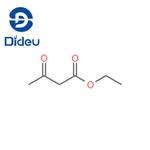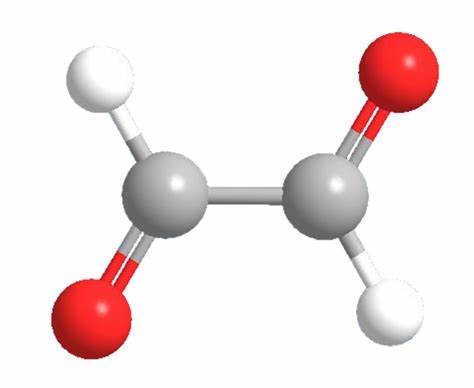Ethyl Acetoacetate: A Versatile Compound for Biofilm Inhibition and Organic Synthesis
General Description
Ethyl acetoacetate has emerged as a promising compound for inhibiting bacterial biofilm formation, showing efficacy across various pathogens. It is cost-efficient and safe for human consumption, with low acute toxicity. Recent studies have highlighted its superior efficacy over acetoacetic acid in inhibiting biofilm formation. Furthermore, in organic synthesis, ethyl acetoacetate's tautomeric properties make it a crucial component in preparing various compounds, including pharmaceuticals. The incorporation of boron into ethyl acetoacetate has expanded its synthetic potential, offering opportunities for the synthesis of complex molecular scaffolds.

Figure 1. Ethyl acetoacetate
Applications as Novel Inhibitors of Bacterial Biofilm
Bacterial biofilms are communities of bacteria that form on surfaces and are extremely difficult to remove by conventional physical or chemical techniques, antibiotics, or the human immune system. Despite advanced technologies, biofilm still contribute to 60 to 80% of human bacterial infections (NIH and CDC) and cause problems in many natural, environmental, bioindustrial, or food processing settings. The discovery of novel substances that inhibit biofilm without increasing the virulence of the bacteria opens doors for countless applications where a reduction of biofilm is desired.
Acetoacetate (AAA) was identified as a biofilm inhibitor in a previous study, where the effect of 190 carbon and nitrogen sources on biofilm amounts by Escherichia coli O157:H7 was determined. With this study, we tested the effect of AAA on growth and biofilm amounts of Cronobacter sakazakii, Serratia marcescens, and Yersinia enterocolitica. AAA reduced growth and biofilm amounts of the three pathogens, albeit at rather high concentrations of 10 to 35 mg ml-1 . AAA at a concentration of 5 mg ml-1 reduced Y. enterocolitica mRNA transcripts of the flagellar master regulator operon flhD, the invasion gene inv, and the adhesion gene yadA. Transcription of the regulator of plasmid encoded virulence genes virF, the plasmid encoded virulence gene yopQ, and ymoA were largely unaffected by AAA. Importantly, AAA did not cause an increase in transcription of any of the tested virulence genes. As a more cost efficient homolog of AAA, the effect of ethyl acetoacetate (EAA) was tested. EAA reduced growth, biofilm amounts, and live bacterial cell counts up to 3 logs. IC 50 values ranged from 0.31 mg ml-1 to 5.6 mg ml -1 . In summary, both AAA and EAA inhibit biofilm, but EAA appears to be more effective.1
Applications in Organic Synthesis
Ethyl acetoacetate is a fundamentally significant molecule, widely used in preparative synthesis and organic chemistry pedagogy. This compound exhibits keto/enol tautomerism and has found numerous applications in the synthesis of heterocycles, natural products, and pharmaceuticals such as edaravone, teriflunomide, and eltrombopag, owning to acetoacetate's electrophilic and nucleophilic functionalities. In order to expand the synthetic potential of this building block and enable further transformations for accessing more complex scaffolds, we aimed to incorporate a boron moiety into the α or β-positions of ethyl acetoacetate.
In this study, we present borylated derivatives of this venerable molecule. A boron handle has been installed at either α or β-position of acetoacetate by homologation of acyl-MIDA (N-methyliminodiacetic acid) boronates with diazoacetates. Either alkyl or boryl groups were found to migrate with regiochemistry being a function of the steric bulk of the diazo species. Boryl β-ketoesters can be further modified into borylated pyrazolones and oximes, thereby expanding the synthetic toolkit and offering opportunities for additional modifications.2
References:
[1] P. RAMESHKUMAR. Isolation and characterization of pathogenic Vibrio alginolyticus from sea cage cultured cobia (Rachycentron canadum (Linnaeus 1766)) in India[J]. Letters in Applied Microbiology, 2017, 65 5: 345-460. DOI:10.1111/lam.12800.[2] ALINA TROFIMOVA. A Boron Scan of Ethyl Acetoacetate Leads to Versatile Building Blocks[J]. Angewandte Chemie International Edition, 2024, 63 15. DOI:10.1002/anie.202319842.
You may like
See also
Lastest Price from Ethyl acetoacetate manufacturers

US $0.00/kg2025-08-28
- CAS:
- 141-97-9
- Min. Order:
- 1kg
- Purity:
- 98%min
- Supply Ability:
- 10 tons

US $0.00-0.00/KG2025-05-21
- CAS:
- 141-97-9
- Min. Order:
- 1KG
- Purity:
- 98.0%
- Supply Ability:
- 10000KGS


